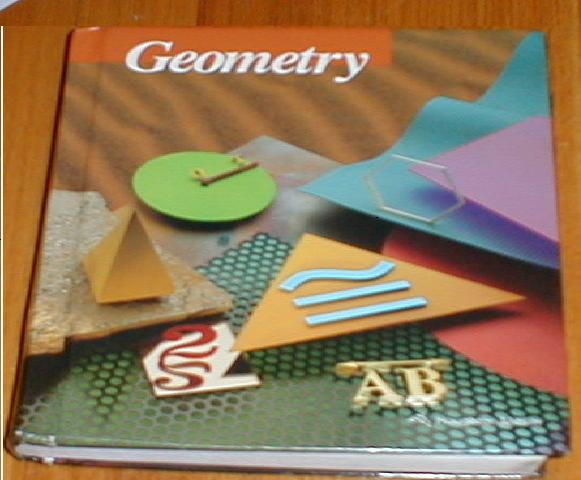
Geometry at the Academy is offered at an added cost outside of the regular
school day. In order to be eligible to enroll in this course students
must meet certain criteria as specified in the Curriculum Guide.
This course is not for everyone! Eighth grade students who should
consider taking this course are those who meet the requirements, and who
have already shown that they have some special math ability and interest.
In addition, these students need to consider that the course is presented
at 7am, daily, with the exception of Fridays. That means that they
will need to be at school about an hour earlier than would otherwise be
necessary. Finally, these students need to realize that Geometry
is a high school course that requires high school effort, and requires
high school amounts of homework. If there is any doubt about whether
or not a particular student has what it takes to be successful, he should
talk to his 7th-grade math teacher about what his thoughts are concerning
that student's ability to enjoy positive results in Geometry in the 8th
grade.
Geometry students will use geometric thinking to understand mathematical
concepts and the relationships among them. They will study properties
and relationships having to do with size, shape, location, direction, and
orientation of figures. Geometry students will learn to use inductive
(geometric patterns) and deductive (geometric structure) reasoning skills,
multiple representations, applications and modeling, and justification
and proof. Students will become familiar with dimensionality,
similarity, and congruence. Emphasis will be on zero, one, two and
three-dimensional reasoning skills, coordinate and transformational geometry,
and the use of geometric models to solve real-world problems.
Although the grade from the Geometry class does not impact a student's
GPA at the Academy, a passing grade must be maintained for a student to
remain eligible to participate in extracurricular activities.
This class will occasionally be taught using techniques that are being called, "Blended Learning". This means that some homework requires students to watch a video that is the lesson for the latest topic. They are expected to learn the material in the videos in the same way that they are expected to learn a lesson when it is given live, in class. Blended Learning techniques have been shown to be at least as effective as in-person lesson presentations and have been incorporated in this class since 2014 with great results.
GEOMETRY CURRICULUM
Textbook: Geometry; Houghton Mifflin
 |
The Geometry course offered at San Antonio Academy was developed so that
the most mathematically talented 8th graders could have a chance
to complete a more advanced level of mathematics than most of their contemporaries,
and to prepare them for upper levels of mathematics that they will encounter
in high school. While accommodations have been made that will help
meet the needs of SAA students parents need to be aware that this
is a 10th grade math course and that the work required to pass it is at
that level
August, September, and October:
Basic definitions and concepts (points, lines, planes,
angles, basic relationships, and postulates)
Deductive and Inductive Reasoning (if-then statements,
converse, logic, patterns)
Constructing Proofs
November and December:
Geometric Comparisons (similarity, congruence)
Geometric Classifications (polygons, quadrilaterals)
Geometry Application Projects
January, February, and March
Nuances of Triangles (Pythagorean Theorem)
Circles (tangents, arcs, chords, angles, segments)
Perimeter, Area – Volume, Surface Area
April & May
Trigonometry and Algebraic Connections
Euclidian Transformations
Academic
Goals:
The
goals and objectives for Geometry at San Antonio Academy this school year
are:
1.
To learn the vocabulary and language of Geometry
2.
To have working definitions of geometric concepts and theories.
3.
To understand the reasoning behind formal geometry and be
able to create individualized proofs for geometric theories.
4.
To apply the concepts of geometry across the curriculum.
| Click for more course information. | Click for Algebra/Geometry information. | Click for testimonials from past students. |